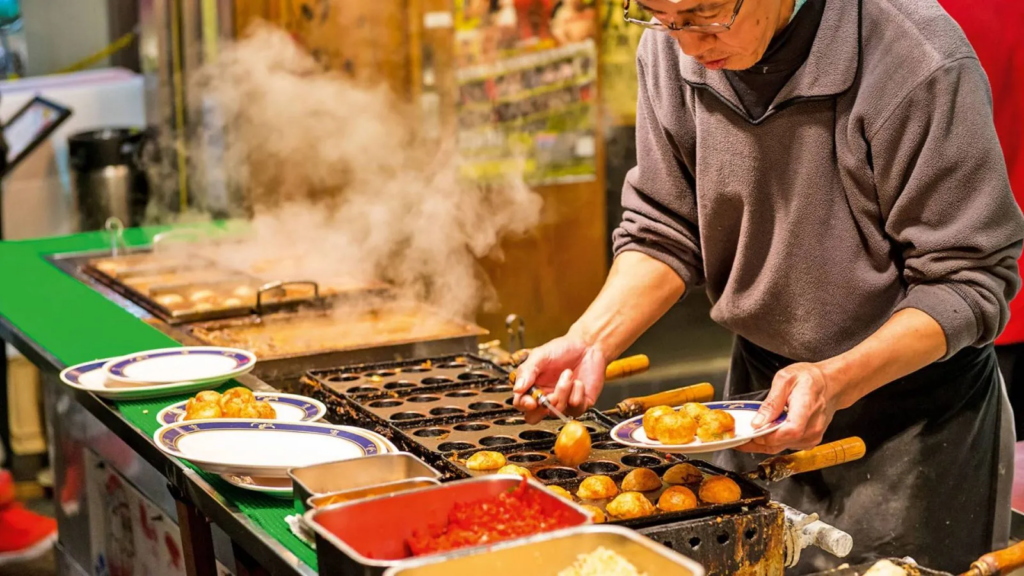
Introduction
In recent years, a delightful trend has emerged, inviting travelers to embark on a unique journey that tantalizes not just the wanderlust but the taste buds too – Culinary Tourism. This trend has gained immense popularity as people seek more than just sightseeing; they crave a deep, flavorful immersion into the heart of a destination. Let’s uncover the delectable world of Culinary Tourism, exploring its cultural significance, planning tips, and the unforgettable experiences it offers.
The Cultural Palette
Food and culture are inseparable. As we delve into Culinary Tourism, we discover how the local cuisine reflects the traditions, history, and values of a community. Beyond personal satisfaction, indulging in local dishes also plays a pivotal role in supporting the economies of the places we visit. By savoring the flavors of a region, travelers contribute directly to the growth of small businesses, from local markets to family-owned eateries.
Popular Culinary Destinations
Culinary adventures are not limited by borders. From the vibrant street food markets of Bangkok to the elegant Michelin-starred restaurants in Paris, every destination has a unique culinary story to tell. Exploring global hotspots opens up a world of diverse flavors and culinary techniques. It’s a journey that invites you to broaden your taste horizons and appreciate the beauty of global gastronomy.
Planning a Culinary Adventure
Embarking on a culinary adventure requires thoughtful planning. Researching foodie-friendly locations and budgeting for culinary experiences ensure that every bite is savored without breaking the bank. Culinary tourism is not just about eating; it’s about creating lasting memories through unique and immersive dining experiences.
Experiencing Local Cuisine
The heart of culinary tourism lies in experiencing local cuisine authentically. Whether you’re indulging in street food delights or enjoying a sophisticated fine dining experience, each bite tells a story. The flavors, aromas, and textures become a sensory journey, allowing you to connect with the soul of a destination through its culinary expressions.
Cooking Classes and Workshops
For those who wish to bring a piece of their culinary adventure home, participating in cooking classes and workshops is a must. Learning hands-on from locals imparts not just recipes but the essence of a culture. It’s an opportunity to recreate the flavors of your travels in the comfort of your own kitchen.
Social Media and Culinary Influencers
In today’s digital age, social media and culinary influencers play a significant role in shaping culinary tourism. Instagram-worthy dishes and viral food trends often influence travel choices. The virtual world becomes a gateway to discovering hidden gems and lesser-known culinary delights.
Health and Safety Considerations
While indulging in culinary delights is a highlight of any journey, it’s crucial to consider health and safety. Dietary restrictions and allergies need careful attention, and ensuring food safety becomes paramount when exploring cuisines in unfamiliar territories.
Sustainable Culinary Tourism
The rise of sustainable tourism extends to culinary adventures. Supporting local farmers and producers not only ensures the authenticity of the experience but also minimizes the environmental impact. Culinary tourists become ambassadors of responsible travel, leaving a positive footprint on the destinations they visit.
Memorable Culinary Adventures
Behind every dish is a story waiting to be told. Personal stories and testimonials from culinary enthusiasts highlight the impact of these adventures. From chance encounters with local chefs to unexpected culinary discoveries, these experiences become cherished memories, forming a unique tapestry of one’s travel journey.
Challenges in Culinary Tourism
While the rewards of culinary tourism are plentiful, challenges do exist. Language barriers can sometimes pose difficulties in navigating local food scenes, and adapting to unfamiliar customs requires an open mind. Overcoming these challenges adds depth to the overall experience.
Future Trends in Culinary Tourism
As technology continues to evolve, so does the landscape of culinary tourism. Integration with virtual reality, augmented reality menus, and AI-driven food recommendations are becoming part of the modern food travel experience. Understanding these trends can enhance the planning process for future culinary adventures.
Impact on Local Communities
The impact of culinary tourism on local communities is a double-edged sword. While it brings economic opportunities, it also poses challenges to preserving traditions. Striking a balance between tourism and tradition is essential for sustainable growth and the preservation of cultural heritage.
Culinary Tourism and the Economy
Culinary tourism is a boon for local economies. Beyond satisfying taste buds, it boosts local businesses and creates job opportunities. From farmers and fishermen to chefs and tour guides, the ripple effect of culinary tourism contributes significantly to the economic fabric of a destination.
Conclusion
In the realm of travel, culinary tourism stands out as a rich and flavorful adventure. From the bustling street markets of Marrakech to the elegant eateries of Tokyo, each destination offers a unique culinary narrative. As you embark on your culinary journey, savor not just the dishes but the stories they tell, the hands that crafted them, and the cultures that shaped them. Taste the adventure, and let the world’s flavors become a part of your own.



